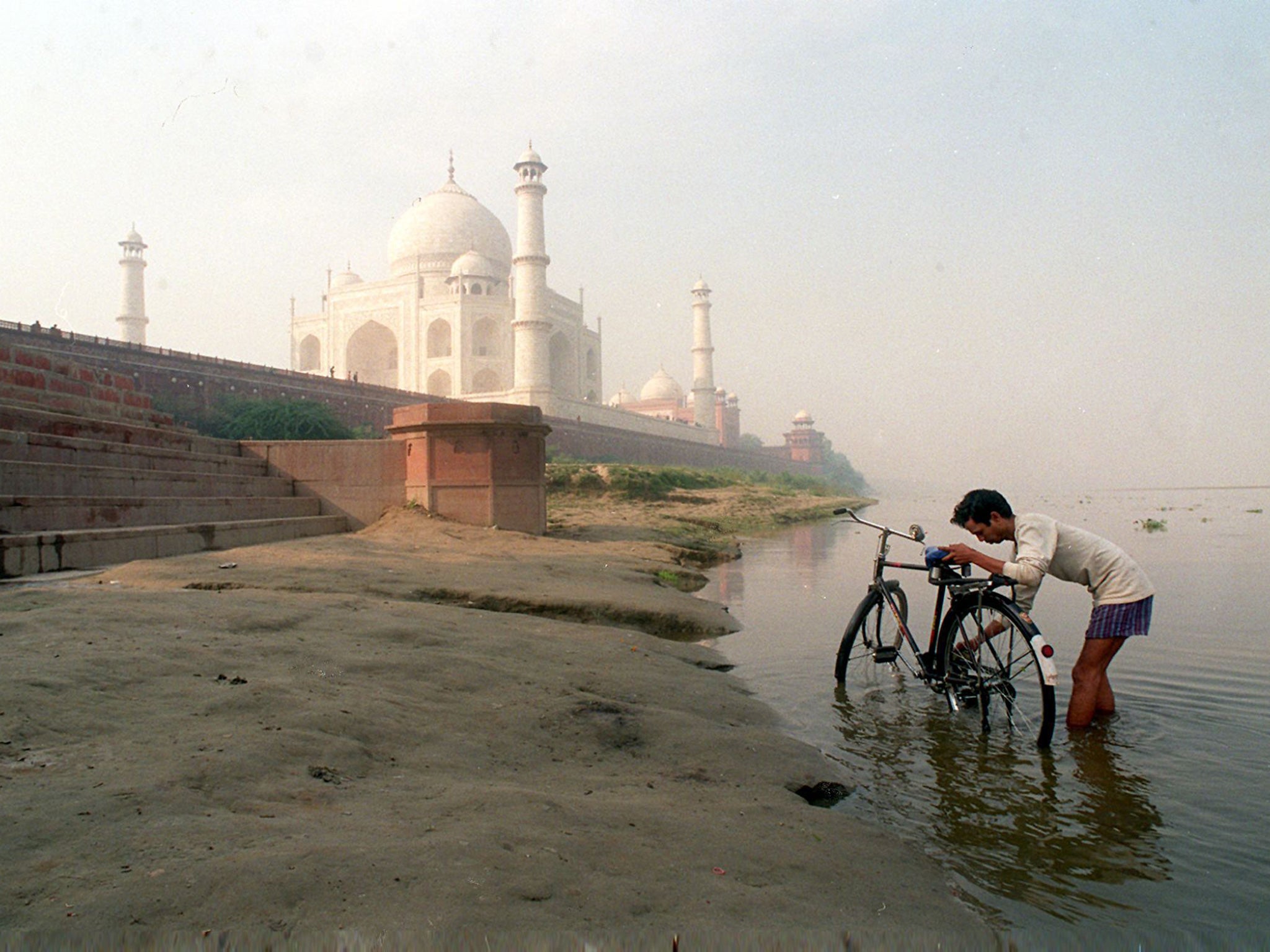Taj Mahal: Indian authorities ordered to protect historic landmark from air pollution threats
Smoke from nearby wood-burning crematorium is yellowing the mausoleum’s marble

When the Mughal Emperor Shah Jahan, the “king of the world”, built a mausoleum for his wife from white marble on the banks of the Yamuna river, the domes and minarets of the Taj Mahal were what resulted.
Once gleaming white, now yellowing, the dome’s marble has been under threat from pollution from the black smoke that billowed from a wood-burning crematorium nearby. Now India’s Supreme Court has ordered a state government to remove the offending crematorium or make it environmentally friendly to protect the iconic monument in the city of Agra.
Built in the 17th century, the Taj Mahal was crafted by hand for Mumtaz Mahal, the “Chosen One of the Palace”, who died giving birth to the couple’s 14th child. Today, it attracts up to four million tourists each year. Uttar Pradesh has closed several nearby factories and made a conscious effort to supply uninterrupted power to the area to discourage residents from using fume-inducing, diesel-operated generators. On Monday the Supreme Court in Delhi heard that the local government could either move the crematorium away from the Taj Mahal or install an electric one in its place.
The Supreme Court judges made their order after receiving a letter from another Supreme Court judge, who said that he had noticed the mausoleum spewing smoke and ash during a recent visit to the monument and was concerned about the effect of air pollution on the marble structure.
In their order, two judges suggested that the state could move the wood-burning crematorium and also build an electric one at the current site. This would allow people wanting to use wood pyres to do so, while others could use the electric crematorium, they said.
Hindus traditionally cremate their dead using wood fires, but the government has tried to encourage the use of electricity-powered crematoriums in recent years due to concerns over damage caused by pollution. This year the state government also banned the burning of cow-dung fuel cakes, which are commonly used in rural areas as a cheap source of fuel for heating and cooking but contribute to dense black smog over the city of Agra.
In court on Monday, the Uttar Pradesh state government was accused of failing to pay enough attention to the finesse of the building during recent construction works in and around the white marble mausoleum. Work has been planned to build a stronger, 500-metre road around the Taj Mahal site but the state government has been reproached for the ugliness of the construction so far.
“Your engineers should be ashamed of themselves. Nobody is giving attention to the details of the construction,” Supreme Court justices told the Uttar Pradesh government on Monday. “People from all over the world come to see the monument and any construction done near Taj should be as good as Taj. You messed it up.”
Subscribe to Independent Premium to bookmark this article
Want to bookmark your favourite articles and stories to read or reference later? Start your Independent Premium subscription today.

Join our commenting forum
Join thought-provoking conversations, follow other Independent readers and see their replies